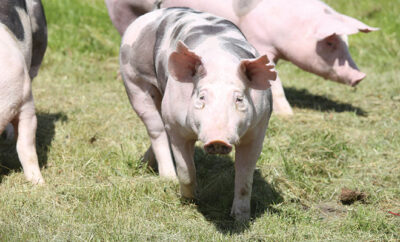
It’s not your ordinary pickle
Imagine a perfect antipasto platter filed with lovely hard cheese, briny cured olives, savory salami and pickled vegetables, accompanied by crusty bread and a glass of wine. What is your first thought? I’m betting it is not “Aha! Fermented foods and beverages, an excellent healthy choice!”
The phrase “fermented food” makes most people think of sauerkraut. Yet so many things people love to eat and drink are derived from a fermentation process: dairy products, including many cheeses, yogurt and kefir; breads, such as sprouted wheat and sourdough; beverages, like soda, beer and wine; meats and fish, ranging from salami to gravlax and pickled herring. Even vinegar and soy sauce are fermented.
These foods have one thing in common. They are preserved using controlled amounts of bacteria and yeast. Fermentation was used by civilizations around the world to extend the shelf life of all kinds of food–meat, grains and vegetables–long past its harvest. Fermentation became a lost art as we used refrigerators and freezers to safely store food.
Yet today, more home cooks are experimenting with fermenting food. Why? Maybe it’s the challenge of learning a new process. Or the realization that homemade food, made with fresh ingredients, usually tastes better than commercially processed equivalents. But many people are inspired by the potential health benefits of fermented food.
The fermentation process helps break down food, pre-digesting it in a controlled way. Essentially, fermentation helps food begin to rot. That sounds more scary than it does appetizing. But this controlled rot makes the vitamins and minerals in food more bio-available to the bacteria in the human digestive system.
We know that having a healthy gut can promote wellness and boosts the immune system. How and why is that? For the answer, we need to take a look at our ancestors. Not our human ancestors, but further back, all the way back to the Earth’s very first inhabitants: bacteria.
Scientists theorize that in its first two billion years, this planet had a limited amount of oxygen. The only life forms that developed were anaerobic, meaning they could produce energy from nutrients without relying on oxygen. The planet and its atmosphere continued to change, and more complex life forms continued to develop. But bacteria became a part of both plant and animal life, and microbes became a part of our bodies as mankind dined on plants and animals.
Bacteria now outnumber the number of cells in the human body tenfold. There are roughly 100 trillion bacteria residing in your gut. These bacteria are responsible for breaking down food, regulating energy use and producing necessary nutrients and vitamins. This job is so important, and the diversity of the bacterial community so diverse, that scientists now refer to gut flora as a person’s microbiota. If that seems too far-fetched a term to describe bacteria, consider this: the microbial community housed in your digestive tract may weigh up to four and a half pounds. Its composition is as unique to each person as their fingerprints.
If you’ve been thinking of trying a recipe for fermented food, it’s fairly easy. We recently enjoyed an experimental batch of kimchee. This Korean dish of fermented vegetables adds hot pepper flakes. It’s a tasty condiment with a kick of heat.
Here’s a simple fermented vegetable recipe that requires very little skill and a minimum of tools and ingredients. The tools you’ll need are a large cutting board, a chef’s knife, a large mixing bowl, a food scale and a 1-quart glass jar with a tight-fitting lid. The ingredients are about two pounds of your favorite crunchy vegetables (cabbages, radishes, carrots or beets) and sea salt. You can experiment with favorite seasonings such as hot pepper flakes, ginger root or cardamom pods.
Peel the veggies if you’d like, then slice, chop or shred them. Weigh the vegetables, then add them to the bowl with a ratio of two teaspoons of sea salt for each pound of vegetables. Vigorously massage the salt, veggies and seasonings using your hands. When finished, pack the mixture into the jar. Use your hand or a small glass to tamp down the mix. If there is not enough liquid in the mix to cover the veggies completely, add filtered water (Chlorine in tap water can prevent fermentation.). Close the jar tightly and leave at room temperature.
For two or three days, open the jar as needed, remove any scum, and keep the vegetables submerged in liquid. The mix will bubble and deepen in color as it ferments. When the flavor is to your taste, put the jar in the fridge to stop the fermentation process. The vegetable mixture should keep at least two weeks. If the color or odor of fermented vegetables ever seems “off,” discard it and make a fresh batch. HLM
Sources: gutmicrobiotaforhealth.com and Katz, S. E., The Art of Fermentation, Chelsea Green Publishing, White River Junction, Vermont (2012.)







